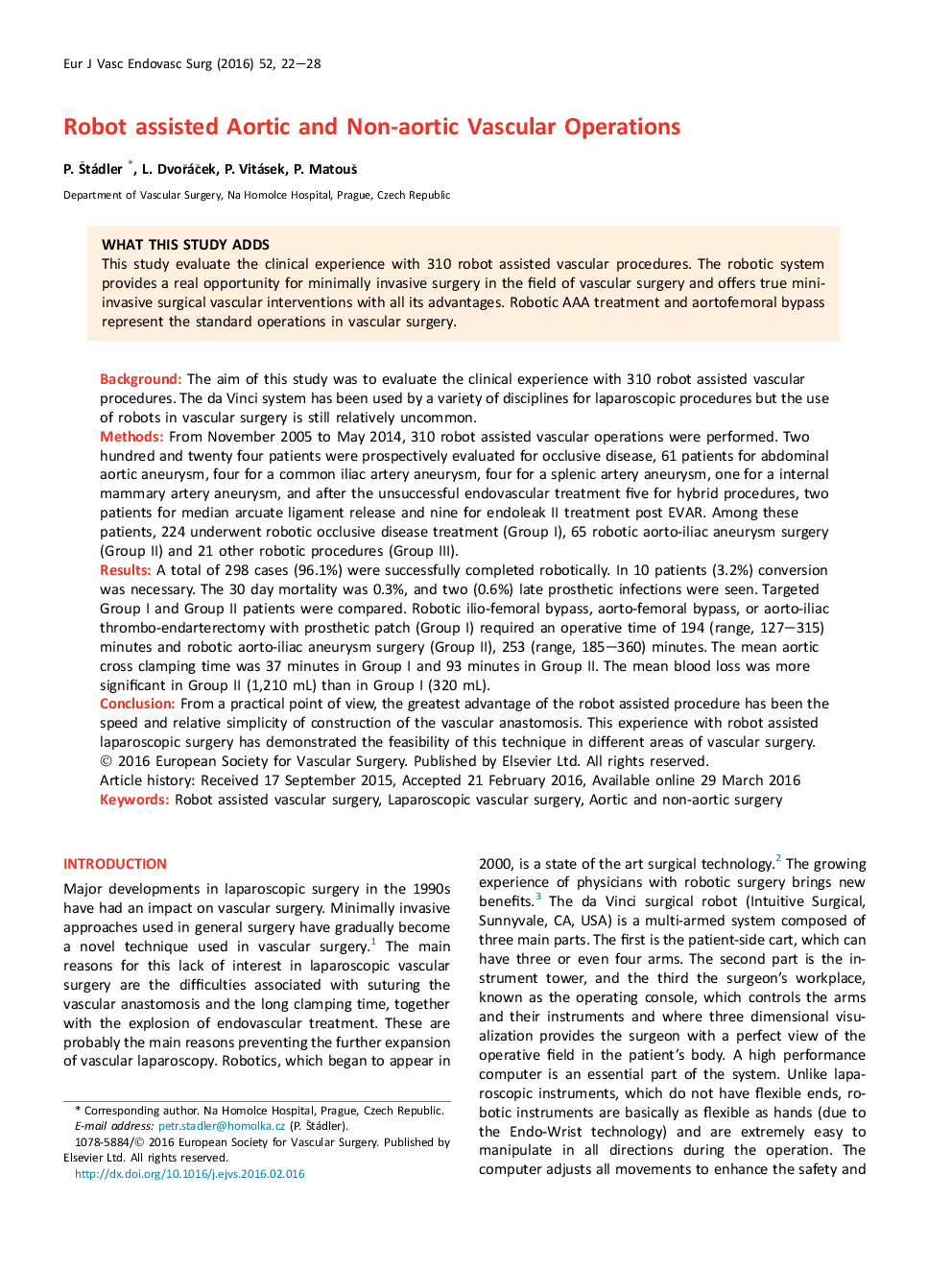| کد مقاله | کد نشریه | سال انتشار | مقاله انگلیسی | نسخه تمام متن |
|---|---|---|---|---|
| 2911636 | 1575428 | 2016 | 7 صفحه PDF | دانلود رایگان |
BackgroundThe aim of this study was to evaluate the clinical experience with 310 robot assisted vascular procedures. The da Vinci system has been used by a variety of disciplines for laparoscopic procedures but the use of robots in vascular surgery is still relatively uncommon.MethodsFrom November 2005 to May 2014, 310 robot assisted vascular operations were performed. Two hundred and twenty four patients were prospectively evaluated for occlusive disease, 61 patients for abdominal aortic aneurysm, four for a common iliac artery aneurysm, four for a splenic artery aneurysm, one for a internal mammary artery aneurysm, and after the unsuccessful endovascular treatment five for hybrid procedures, two patients for median arcuate ligament release and nine for endoleak II treatment post EVAR. Among these patients, 224 underwent robotic occlusive disease treatment (Group I), 65 robotic aorto-iliac aneurysm surgery (Group II) and 21 other robotic procedures (Group III).ResultsA total of 298 cases (96.1%) were successfully completed robotically. In 10 patients (3.2%) conversion was necessary. The 30 day mortality was 0.3%, and two (0.6%) late prosthetic infections were seen. Targeted Group I and Group II patients were compared. Robotic ilio-femoral bypass, aorto-femoral bypass, or aorto-iliac thrombo-endarterectomy with prosthetic patch (Group I) required an operative time of 194 (range, 127–315) minutes and robotic aorto-iliac aneurysm surgery (Group II), 253 (range, 185–360) minutes. The mean aortic cross clamping time was 37 minutes in Group I and 93 minutes in Group II. The mean blood loss was more significant in Group II (1,210 mL) than in Group I (320 mL).ConclusionFrom a practical point of view, the greatest advantage of the robot assisted procedure has been the speed and relative simplicity of construction of the vascular anastomosis. This experience with robot assisted laparoscopic surgery has demonstrated the feasibility of this technique in different areas of vascular surgery.
Journal: European Journal of Vascular and Endovascular Surgery - Volume 52, Issue 1, July 2016, Pages 22–28
